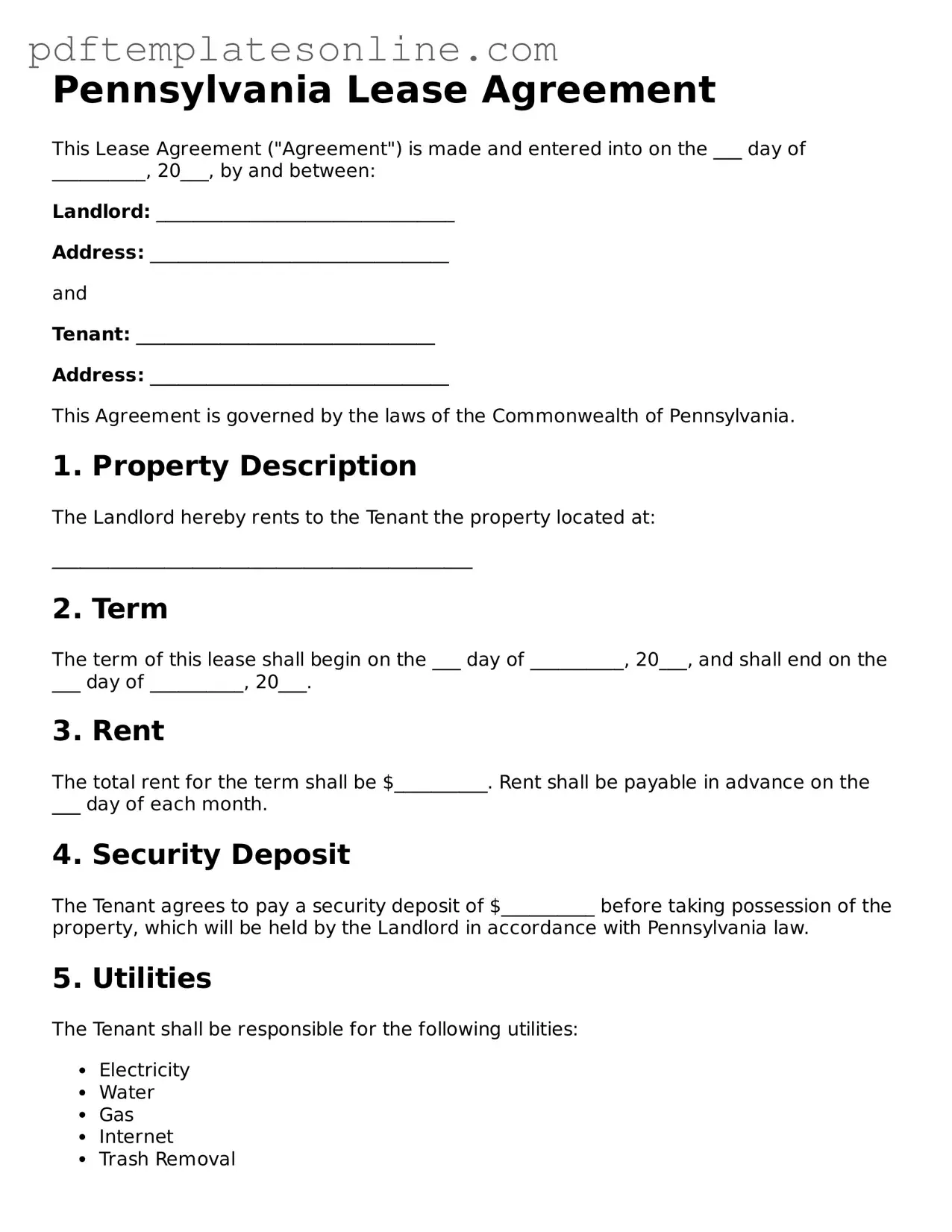When filling out the Pennsylvania Lease Agreement form, many individuals overlook important details that can lead to misunderstandings or disputes later on. One common mistake is failing to include all the necessary parties involved in the lease. It is essential to list not only the landlord but also all tenants who will be residing in the rental property. Omitting a tenant's name can create confusion regarding responsibilities and rights under the lease.
Another frequent error is neglecting to specify the rental term. The lease should clearly state whether it is a month-to-month agreement or a fixed-term lease, such as one year. Without this information, both parties may have different expectations about the length of the rental period, which can lead to disputes down the line.
Many people also forget to detail the rental amount and payment schedule. Clearly indicating the monthly rent, due date, and acceptable payment methods is crucial. If these details are vague or missing, it can result in late payments or disagreements about how and when rent should be paid.
In addition, some individuals fail to include information about security deposits. The lease should specify the amount of the deposit, the conditions under which it may be withheld, and the timeline for its return after the lease ends. This information protects both the landlord and tenant and helps to avoid conflicts regarding the return of funds.
Another mistake involves not addressing maintenance responsibilities. The lease should outline who is responsible for repairs and maintenance of the property. If this information is not included, tenants may expect the landlord to handle all repairs, while landlords may assume tenants are responsible for certain issues.
People often overlook the importance of including rules about pets. If pets are allowed, the lease should specify any restrictions, such as breed or size limitations. Conversely, if pets are not allowed, this should be clearly stated to avoid any confusion or violations of the lease terms.
Additionally, some individuals neglect to include clauses regarding early termination of the lease. It is beneficial to outline the process and any penalties for breaking the lease early. Without these details, tenants may find themselves in a difficult situation if they need to move unexpectedly.
Another common oversight is failing to include a notice period for terminating the lease. Both parties should agree on how much notice must be given before ending the lease. This helps ensure that both the landlord and tenant are aware of their obligations and can plan accordingly.
Lastly, many people do not read the lease thoroughly before signing. It is crucial to review all terms and conditions carefully. Understanding every aspect of the lease can prevent future issues and ensure that both parties are on the same page.
